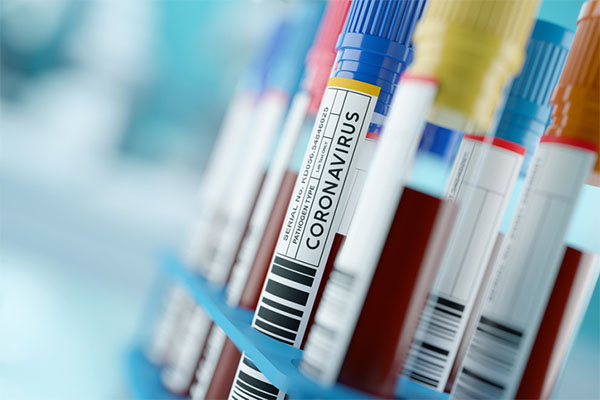Artificial Intelligence
Private Industry, Accademia Stepping Up in AI Fight Against Covid-19


By John P. Desmond, AI Trends Editor
The worldwide Covid-19 spread is a tragic experience that is spurring innovators to try many approaches to slowing it down, measuring it, treating it and ultimately the hope is, prevent it with an effective vaccine. Here we look at examples of how innovative private enterprises and selected academics are employing AI in the fight.
Scientists from Deargen of South Korea recently published a preprint paper with results from a deep learning-based model called MT-DTI, that used simplified chemical sequences, instead of 2D or 3D molecular structures, in an effort to predict how strongly a molecule of interest would bind to a target protein.
From available FDA-approved antiviral drugs, the HIV medication atazanavir was found to be highly expected to bind and block a protein on the outside of the virus that causes Covid-19, according to an account in Analytics Insight. The model also detected three other antivirals that have potential.
Deargen is focused on an AI-based new drug development process, operating through its network of drug development experts. The company specializes in genome data analysis, biomarker prediction, molecule selection and optimization, according to its website.
Nanox, based in Israel, has developed a mobile digital X-ray system that uses AI cloud-based software to diagnose infections. The Nanox System incorporates an image database, radiologist matching, diagnostic reviews and annotations, and an AI system that provides assistance, according to a recent account in Forbes. Nanox recently signed an agreement to supply 1,000 of its Nanox Systems, which are priced lower than existing X-ray systems, across Australia, New Zealand and Norway.
CEO and co-founder Ran Poliakine, a serial entrepreneur whose ventures have included Powermat Technologies, started the company in 2012 with Hitoshi Masuya, now Japan Laboratories Manager. Poliakine envisions that the future of epidemic prevention lies with AI-based diagnostic tools. “Nanox has achieved a technological breakthrough by digitizing traditional X-rays, and now we are ready to take a giant leap forward in making it possible to provide one scan per person, per year, for preventative measures,” he stated.

The system is fast and the AI makes it faster. “AI can detect conditions instantly which makes it a great source of power when trying to prevent epidemics,” he stated. “If we talk about 1,000 systems scanning 60 people a day on average, this translates to 60,000 scans that need to be processed daily by the professional teams.” Humans are not able to support the analysis of that volume of X-rays with the speed required, he suggests.
Innovations from China in Virus Fight
Several innovative efforts are going on in China as well. Technology giant Baidu is using cameras equipped with computer vision and infrared sensors to measure the temperatures of people in public areas, according to an account in The Next Web. (Such an approach is unlikely in the US, based on privacy protection values.) The Baidu system is said to be capable of screening up to 200 people per minute and detect their temperature with an accuracy in the range of 0.5 degrees Celsius. Anyone with a temperature above 37.3 degrees Celsius (99.14 Fahrenheit) is flagged. The technology is now in use in Beijing’s Qinghe Railway Station.
Chinese tech giant Alibaba has developed an AI system said to be capable of detecting coronavirus in chest CT scans with 96% accuracy. The AI was trained on data from 5,000 coronavirus cases and can perform a test in 20 seconds. It takes a human 15 minutes to diagnose a patient. The system is also said to be able to tell the difference between the coronavirus and ordinary viral pneumonia. The system is reportedly being adopted in 100 hospitals in China.
Also, researchers at Renmin Hospital of Wuhan University, working with the EndoAngel Medical Technology Co. and the China University of Geosciences, reported 95% accuracy in detecting Covid-19 in chest CT scans. The researchers trained a deep learning algorithm on 45,000 anonymized CT scans. In a recent preprint paper published on medRxiv, the performance of the AI compared to expert radiologists.
University of Copenhagen Researchers Predicting Ventilator Demand
Elsewhere in academia, experts at the University of Copenhagen, Denmark, are using AI to create models that calculate the likelihood that a patient testing positive for Covid-19 will need intensive care or a ventilator. The new initiative is being conducted in a collaboration with Bispebjerg Hospital in Copenhagen, according to an account in Medical Express.

“With these models, hospitals will be able to know, for example, that 40% of their 300 hospitalized patients will probably require a ventilator within one week. This allows them to plan and deploy their resources in the best possible way,” stated Professor and Department Head Mads Nielsen of the University of Copenhagen’s Department of Computer Science.
Data comes from multiple sources, including patterns from Danish coronavirus patients based on blood tests, X-rays and patient medical records. The histories are compared to data from newly-admitted patients. “Our model calculates how likely a specific patient is to require a ventilator, and how many days will go by before such a need arises. That’s our goal,” stated Nielsen.
These patterns are compared with information from newly hospitalized patients. The data consists of X-rays, tests and measurements taken of patients at the time of their admittance to hospital, along with their electronic health records.
“All data will go to a supercomputer where, within minutes, our model calculates how likely a specific patient is to require a ventilator, and how many days will go by before such a need arises. That’s our goal,” says Mads Nielsen.
Read the source articles in Analytics Insight, Forbes, The Next Web and Medical Express.





















